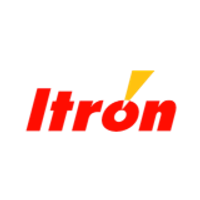
Itron Inc
NASDAQ:ITRI

Earnings Call Analysis
 Q3-2023 Analysis
Itron Inc
Q3-2023 Analysis
Itron Inc
The story of Itron's third quarter of 2023 is one of significant recovery and strategic success. Amidst an improving supply environment and diligent execution by the global operations team, the company saw a 33% year-over-year increase in revenue, reaching $561 million, marking the highest level since Q1 of 2020. The reported adjusted EBITDA of $68 million reflects a stellar 181% increase year-over-year, translating to a healthy 12% of revenue. Non-GAAP earnings per share were notably up by $0.75, standing at $0.98. Another positive highlight was the free cash flow, which surged to $28 million, an $18 million improvement over the previous year. A key factor in these accomplishments is Itron's alignment with the accelerating trends in the energy and utilities sector, such as electrification, energy transition, and grid edge digitalization.
Itron's strategic approach includes fostering partnerships and expanding its global reach. A notable development in this regard was the agreement with Exelon to extend the use of Itron's Operations Optimizer Solution, designed to enhance grid operations efficiency through data analytics. This entrustment by one of America's largest utility companies signifies confidence in Itron's offerings. Further extending its international footprint, Singapore Power awarded Itron the expansion of their field area network, a testament to the company's growing influence in the Asia-Pacific region. Moreover, Itron kicked off a significant project to provide their IntelliPEAK load control switches, which support demand response and better load management, underlying the company's commitment to efficient grid operations.
Delving into the financial specifics, Itron reported a gross margin of 33.4%, up by 490 basis points compared to the previous year, showcasing the company's ability to maintain profitability amidst market fluctuations. This margin expansion is attributed to an exceptionally favorable product mix and operational efficiencies realized as volumes increased. The GAAP net income stood at $40 million or $0.87 per diluted share, marking a strong performance for the quarter.
Hidden.
Hidden.




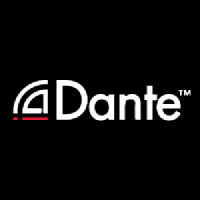
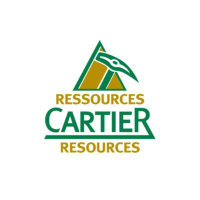





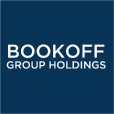
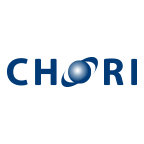















 You don't have any saved screeners yet
You don't have any saved screeners yet

Good day, ladies and gentlemen. Welcome to Itron's Third Quarter 2023 Earnings Release Conference Call. At this time, all participants are in a listen-only mode. After the speaker's presentation, there will be a question and answer session. Please note that today's conference is being recorded. I will now hand the conference over to your speaker host, Paul Vincent, Vice President of Investor Relations. Please go ahead.
Good morning, and welcome to Itron's Third Quarter 2023 Earnings Conference Call. Tom Deitrich, Itron's President and Chief Executive Officer; and Joan Hooper, Senior Vice President and Chief Financial Officer, will review Itron's third quarter results and provide a general business update and outlook. Earlier today, the company issued a press release announcing its results. This release also includes details related to the conference call and webcast replay information. Accompanying today's call is a presentation that is available through the webcast and on our corporate website under the Investor Relations tab. Following prepared remarks, the call will be open for questions using the process the operator described. Before Tom begins, a reminder that our earnings release and financial presentation include non-GAAP financial information that we believe enhances the overall understanding of our current and future performance. Reconciliations of differences between GAAP and non-GAAP financial measures are available in our earnings release and on our Investor Relations website. We will be making statements during this call that are forward-looking. These statements are based on current expectations and assumptions that are subject to risks and uncertainties. Actual results could differ materially from these expectations because of factors that were presented in today's earnings release and comments made during this conference call, as well as those presented in the Risk Factors section of our Form 10-K and other reports and filings with the Securities and Exchange Commission. All company comments, estimates or forward-looking statements are made in a good faith attempt to provide appropriate insight to our current and future operating and financial environment. Materials discussed today, November 2, 2023, may materially change, and we do not undertake any duty to update any of our forward-looking statements. Now please turn to Page 4 of our presentation as our CEO, Tom Deitrich, begins his remarks.
Thank you, Paul. Good morning, everyone. Thank you for joining. Operational activity continued to accelerate during the third quarter, supported by an improving supply environment and impressive execution from our global operations team and broader organization. The performance highlights include: Q3 revenue increased by 33% year-over-year and 4% sequentially to $561 million, the highest level since Q1 of 2020. Adjusted EBITDA was $68 million, an increase of 181% year-over-year to 12% of revenue. Non-GAAP earnings per share was $0.98, a $0.75 improvement compared to the third quarter of 2022. Free cash flow was $28 million, an increase of $18 million year-over-year. Itron's strategic positioning and improved asset utilization, coupled with the accelerating trends in electrification, energy transition, grid edge digitalization, gas safety, water efficiency and consumer demand for improved services give us confidence that our investments are closely aligned with the critical customer needs for many years to come. Our team's execution has allowed us to pull activity into 2023 that was previously anticipated to occur in 2024. Portions of the supply chain have improved more quickly than we had expected coming into the year, which has enabled the fulfillment of some supply constrained revenue. Turning to Slide 5. Bookings were $413 million as we continue to experience a steady turns rate. 2023 bookings to date and awards activity have been in line with expectations, and we continue to progress towards at least $2 billion in annual bookings. It is worth noting that our relationships, projects and deployments are long term in nature with most of the backlog consisting of our Network Solutions and Outcomes segments. The total backlog ending the third quarter of $4.3 billion represents several years of visibility and is comprised of projects with signed contracts, assured funding and regulatory approval. Projects within our backlog are related to critical infrastructure, grid resiliency, service modernization and revenue assurance for our customers who are deploying capital to improve visibility, agility and return on their assets. These projects tend to be nondiscretionary in nature and are durable during periods of economic volatility and uncertainty. Our funnel of future bookings is continuing to grow due to clear macro trends supported by constructive regulatory policies that accelerate the modernization of distribution grades globally and incentives increasingly available to our customers to support energy transition, decarbonization and sustainability targets. The recently announced grant awards under the Infrastructure Investment and Jobs Act or IIJA, include grid resiliency, smart grid and innovation topic areas that further underscores the growing focus on utility infrastructure, resulting in opportunity expansion for Itron. There are a few commercial highlights during the quarter of note. In September, we signed an agreement with Exelon to extend the utilization of Itron's operations optimizer solution, which enables Exelon's operating companies to utilize valuable distribution grid data for analytics that unlock operational efficiencies and increased business intelligence. This agreement supports Itron's focus on outcomes with Exelon in the ongoing effort to expand the value and return on Exelon's investment in grid edge infrastructure across its operating companies. Singapore Power has awarded Itron with the expansion of their field area network throughout the Asia Pacific regions, more utilities are confronting challenges related to grid stability and reliability, and this award is an excellent opportunity for Itron to continue to expand the reach of this technology into new areas and applications. Additionally, we recently began a sizable project to provide our IntelliPEAK load control switches, which enable demand response and more effectively manage load during critical periods. This project will benefit our customers' end users and support more efficient grid operations. Now turning to Slide 6, I will cover some operational insights from around the business. Q3 2023 is the fourth consecutive quarter of revenue growth and margin expansion. We have taken very deliberate measures across our manufacturing and supply chain organizations to maximize operating leverage as demand and activity accelerates. At the segment level, portfolio optimization, new product introductions, improved manufacturing asset utilization and talent expansion have contributed to the improving performance trend. These initiatives resulted in a record quarterly revenue for Network Solutions and a new gross margin record for device solutions. Supply chain conditions have improved, and although we do not expect a return to pre-pandemic component lead times in the near term, our production output levels have meaningfully accelerated. We will continue to be proactive in managing our supply chain and adjusting our inventory management strategies as needed to address the increased global supply chain volatility. Our backlog increasingly consists of projects related to grid edge digitalization as aging infrastructure continues to be upgraded or replaced. Customer awareness is growing that the solutions of the past no longer meet future needs. As the leading provider of grid edge solutions and intelligence at scale, we see a very long runway of opportunity ahead. Lastly, when we consider our impact on people and planet, we continue to thoughtfully reduce our emissions. During 2022 alone, Itron's offerings helped our customers avoid 180x more carbon than Itron's own operations generated. This is up from 100x in 2021. This ratio will continue to grow as the breadth and adoption rates of our solutions expand. Now I will ask Joan to provide a financial update for the third quarter and our outlook for the remainder of the year.
Thank you, Tom. I'll cover the third quarter results first and then provide our latest outlook for the fourth quarter. Please turn to Slide 7 for a summary of consolidated GAAP results. Third quarter revenue of $561 million increased 33% year-over-year, ahead of our expectations due to better supply chain conditions and strong operational execution, resulting in increased shipments to our customers. Gross margin for the quarter was 33.4%, 490 basis points higher than last year and the highest level since Q3 of 2017. The better-than-expected margin expansion was due to very favorable product mix and operational efficiencies realized as volumes ramped. GAAP net income of $40 million or $0.87 per diluted share compares to $4 million or $0.09 per diluted share in the prior year and was driven by higher operating income, partially offset by higher taxes. Regarding non-GAAP metrics on Slide 8. Non-GAAP operating income was $59 million, up $44 million from the prior year. Adjusted EBITDA of $68 million was also up $44 million and the highest quarterly EBITDA since Q3 of 2019. Non-GAAP net income for the quarter was $45 million or $0.98 per diluted share versus $0.23 a year ago. Year-over-year revenue comparisons by business segment are on Slide 9. Device Solutions revenue was $111 million, a $12 million or 13% year-over-year increase on a constant currency basis, primarily due to growth in water meter sales. Network Solutions revenue was a record $385 million, increasing 43% or $115 million over last year. The year-over-year growth was due to continued improvement of supply chain conditions, which enabled higher shipments. Outcomes revenue of $65 million increased $7 million or 13% in constant currency, primarily due to an increase in recurring services. Moving to the non-GAAP year-over-year EPS bid on Slide 10. Our Q3 non-GAAP EPS was $0.98 per diluted share, up $0.75 from the prior year. Pretax operating performance had a positive $1.07 per share impact due to the fall-through of higher gross profit, partially offset by higher operating expenses. Higher tax expense had a negative impact of $0.29 per share and FX and share count had a negative year-over-year impact of $0.03 per share. Turning to Slides 11 through 13. I will review Q3 segment results compared with the prior year. Device Solutions revenue was $111 million with gross margin of 24.3% and operating margin of 16%. Gross margin was up 860 basis points, and operating margin was up 850 basis points year-over-year, reflecting a higher value product mix and operational efficiencies. We are very pleased with the improvement in devices profitability throughout 2023 as they execute on their product portfolio road map. Network Solutions revenue was $385 million, and gross margin was 35.1%. Gross margin increased 480 basis points year-over-year due to very favorable product mix and improved operational efficiencies. Operating margin of 26.6% increased 640 basis points due to higher gross profit and operating leverage. Outcomes revenue was $65 million with gross margin of 38.6%. Gross margin decreased 240 basis points as lower software license activity was partially offset by increased recurring services. onetime software license revenue is typically high margin and generally lumpier, which can impact comparisons between periods. Operating margin of 15.8% decreased 410 basis points due to the fall-through of lower gross margin and higher expenses. Turning to Slide 14. I'll cover liquidity and debt at the end of the third quarter. Total debt remained flat at $460 million and net debt was $205 million. Net leverage was 1.1x at the end of Q3. Cash and equivalents at the end of the third quarter were $255 million. Free cash flow was $28 million in Q3, up $18 million year-over-year driven by higher profitability, partially offset by an increase in working capital to support business growth. Recently, we amended the credit agreement related to our $500 million revolver to extend it through 2026. This credit facility is currently undrawn and provides flexibility to execute on opportunities that further our strategic growth objectives. Now please turn to Slide 15 for our updated fourth quarter outlook. We anticipate fourth quarter revenue to be between $565 million to $575 million. The midpoint of this range represents 22% year-over-year growth. For Q4 non-GAAP EPS, we expect to be in the range of $0.70 to $0.80 per diluted share. At the midpoint, this is up 6% versus Q4 of last year. The year-over-year growth rate of 6% is muted due to a negative effective tax rate of minus 30% in Q4 of last year. Now please turn to Slide 16 for an update to our annual 2023 outlook. Incorporating this updated Q4 guidance, the full year expectations are now a revenue range of $2.16 billion to $2.17 billion, which at the midpoint represents a $265 million increase versus our initial guidance provided in February. This 14% improvement in annual revenue guidance was driven by a faster-than-expected recovery of component availability, which enabled us to ship more out of the backlog. Initially, we expected most of this higher revenue to be realized in 2024. Obviously, we and our customers are very pleased that we are able to deliver shipments ahead of earlier expectations. The higher revenue and strong gross margins have had a very positive impact on earnings and our full year non-GAAP EPS range is now between $2.83 to $2.93 per diluted share. At the midpoint, this represents an increase of $1.98 per share from our initial 2023 guidance issued in February. In summary, we are pleased with the operational execution in 2023. We took advantage of a faster-than-expected component supply recovery and delivered more shipments to customers, resulting in significantly higher revenue than expected. In addition, we remain focused on initiatives to improve profitability, which is evident in our expanding margins and increased cash flow. We are well positioned with a flexible balance sheet to support our strategic objectives. Now I'll turn the call back to Tom.
Thank you, Joan. Our third quarter results reflect the convergence of preparation and execution. The magnitude of change related to how energy is being produced, distributed and consumed is accelerating, and our strategy aligns with the evolving needs of our customers. Customer success is a critical metric for Itron, and we are deeply invested in coordinating our efforts with our customers' business objectives. Our annual Itron Inspire event held recently in San Antonio, showcases our commitment to bring together the best minds in the industry to share insights and plan the future together. This unique event attended by industry experts, including customer executives, technology developers and channel partners from the diverse ecosystem of energy and water industries. During this event, we are continually reminded of the wide range of challenges, utilities, cities and municipalities confront in providing reliable, secure and affordable energy and water to the communities they serve. We are also reminded of our obligation to continue to innovate, collectively learn and be prepared to solve problems as they arise to help our customers fulfill their missions in a future that is increasingly complex and dynamic. A tremendous amount of work goes into creating an environment like Itron Inspire, and I'm grateful for all who have participated. Your work is important, and this event truly helps us all focus on actions we can take in pursuit of a more sustainable future. Thank you for joining us today. Operator, please open the line for some questions.
Thank you. Our first question coming from the line of Jeffrey Osborne with TD Cowen.
Tom, just a question on the backlog. I was curious if you could just walk through, since you're pulling forward a lot of 24 into '23 as the components have become more available. How do we think about 2024 and some of the backlog that wasn't inflation protected for some of the higher cost semiconductors? How do we think about that lapsing itself in essence, I would imagine there's a point in time where some of the inflation protected backlog will start flowing through the P&L, and you would have a more meaningful margin expansion.
Sure. Thanks, Jeff. The total backlog right now is, call it, right around 70%, maybe a touch above of that $4.3 billion has been repriced or priced indexed. The majority of the pre-inflation run up, meaning the unrepriced portion of the backlog should roll through in the next, call it, 12 months time frame. So that gives you a sense of the split of where we stand. The things that we're rolling into backlog now, meaning new bookings, they are indeed repriced, and it is something that will improve margins as we roll through some of that pre-pandemic backlog.
And maybe just one follow-up on that topic. Are you starting to see as some industries in auto and industrial have rolled over a bit. Are you seeing lower cost semiconductors that maybe in the past were more challenging to get either on the analog side or other areas that you need?
Sure. I would say that in general, supply has been much better. So let's start with the basics of putting your hands on the components, supply improving. Lead times are still pretty long. So we haven't seen a meaningful retraction in the lead times themselves relative to costs, I would say the cost profile, you get pretty flat overall. We aren't seeing increases any longer, but we haven't seen any meaningful retraction just yet on the cost level of components, whether that is mechanical or semiconductor related.
Got it. And then just very quickly, if you could touch on the quoting activity and then the goal of $2 billion in bookings, I think you said for the year, how would you categorize the quoting activity? And is there maybe projects that you've wanted that are awaiting regulatory approval that, that would then flip in the backlog, and it's not necessarily a new RFP you're chasing. If you could just walk through the mechanics on how you had achieved the goal of $2 billion would be helpful.
Sure. So the amount of bookings we've had year-to-date is in line with expectations since the very beginning of the year. We thought that bookings would be back half weighted, and that's indeed what's playing out. In terms of making the $2 billion or more for the year, we have very good line of sight to that. You have correctly diagnosed. We have awards that are in our items that were going through the final steps, meaning getting contracts signed and working through regulatory approval, which gives us a good view as to where the year should land or perhaps more. So feeling very good. Relative to quoting levels, I would characterize them as very robust. We have an awful lot of activities going on with customers as they are focused on improving resiliency and reliability. So things like outage management and vegetation management are strong, the ability to handle distributed energy resources and deal with increasing rates of whether they would be EVs or batteries or rooftop solar, all of these distributed energy resources need to be managed to ensure resilient, reliable, stable grid. And as those things continue to grow in volume, our customers are reacting to that and continue to make good investments. But the scenario that I've laid out there is primarily a North America and Asia Pacific area in water in Europe, specifically, we've seen very strong turn rates and ongoing business as water infrastructure investment continues in Europe. So that gives you a little bit of a regional flavor overall. But very pleased with the positioning, the visibility relative to bookings and quoting activity is strong as we head through the back of the year into 2024.
That's great to hear. That's all I have. Thank you.
Thanks, Jeff.
Our next question coming from the line of Martin Malloy with Johnson Rice & Company.
Congratulations on the strong quarter. My question is about the Outcomes segment revenues there. Year-to-date, your Network Solutions shipments have picked up quite a bit. Can you maybe talk us through the timing of when we should look for an increase in the outcome segment revenue related to this pickup in the endpoints and the network solutions shipments that occurred this year that it's been occurring?
Yes, I'll take that. In general, we think about it in a kind of a 12- to 18-month time frame. So it's great news, as you indicated that networks has really started to ramp, and we would expect to follow on outcomes sort of in the 12- to 18-month lag period. The other thing I would just caution, again, we've talked about it in the past is given the fact that there are sometimes onetime license revenue, you can get some lumpiness from quarter-to-quarter in the outcomes top line, but we continue to be very optimistic about our ability to grow that business and have it be more come SaaS-based.
Okay. And then my follow-up question is also on the outcome segment. If we look over an annual basis, could you maybe remind us what the percentage of the revenue and outcomes it would be considered reoccurring the non-licensing.
Sure. The amount of recurring revenue in the outcomes business is about 75% of the total outcomes piece. Okay. It can move up and down by a few percentage points on a quarterly basis. As Joan pointed out, sometimes you get some lumpy onetime things in there, which generally are margin accretive, but they would take that recurring percentage down. But if you average it over the last, let's say, 3, 4 quarters, you're right at 75%. We think that number continues to creep upward. It probably gets closer to 80 as that business will scale and you'll have more recurring revenue in the form of SaaS-based activities as well as services where we would run the network for someone or provide ongoing maintenance services, things of that nature. So I think 75 today probably on the 20 to 80 over the next year or so.
Great. Appreciate the response.
Thanks, Martin.
Our next question coming from the line of Pavel Molchanov with Raymond James.
This is Graham Price on for Pavel. I guess first one for me. You called out strength in water for the Devices segment. And I think you touched on it a little bit in a previous question, but I was just wondering if you could talk a little bit further on that strength and how that rolls into 2024.
Sure. So the strength that we've seen for most of this year and certainly continued on into the third quarter results that we just printed. Water in Europe specifically has been stronger than we expected as we came into the year. It really is investment in automating metering, automating water services, improving the efficiency, so reducing leaks is what's driving that strength. And just given our footprint, we've seen it primarily in Europe. In the Americas, the water communications portfolio, we have continues to move along more or less at the pace we expected, which is part of the networks solution. But in Europe, it really was stronger than we had anticipated. Certainly, we'll continue to watch and monitor that as we go through the fourth quarter and into next year. I think it's a little premature to forecast exactly what 24 would look like, but very much pleased with the performance of the Water segment in devices through this year. That has really contributed to some of the dramatically improving gross margin levels that is present in the devices business year-over-year.
Got it. And for my follow-up, you've mentioned longer lead times, but is the concept of kind of the Golden screw bottlenecks that you've dealt with in the past, is that era pretty much over at this point?
Certainly, there are some mismatched sets of components that are still in our inventory level today, but I would say about 80% plus of those golden screws, if you will, have been recovered, and we continue to see things moving in the right direction. And so I think supply chain, certainly, it has normalized and that has helped the revenue. So some of the pull forward of things that we thought coming into the year, we would only be able to deliver in '24. We're taking advantage of and the supply chain team has done a really nice job of being able to turn those Golden screws those components into finished goods and delivery teams, getting them installed and in operation with our customers. So rolling all the way through, it has been a very successful effort on the part of the team.
Understood. Great to hear. I'll pass it along.
Thank you, Graham.
Our next question coming from the line of Ben Kallo with Baird.
Hey guys congrats on the quarter. Tom, maybe can you talk to us just about, I guess, the environment for new deals, both on networking side is talking to North America as well as outcomes. Just as we get a lot of talk about utility rates going up. I'm just wondering about how you balance new infrastructure with pushing out higher utility rates to customers at the PTC level? Then I have a follow-up.
Very good. So there are a couple of layers to your question. So first and foremost, quoting activity remains strong and robust for some of the underlying causes that I outlined earlier, resiliency, reliability, distributed energy resource management efficiency in the overall operation, whether you're talking about reducing weeks, improving safety or just doing a better job of managing the assets. All of those types of needs are very acute with our customers today, and that fuels a lot of the quoting activity and the expectations we have for bookings into Q4. There are awards, as I hinted at earlier, that haven't rolled into backlog yet as we finish out some of the process, which, again, gives us good visibility. We do see utilities continuing to replace and improve the assets that they have in the field today. It absolutely is going into rate cases and rate case approvals are moving along at the pace we would expect. We also start to see some of the IIJA money starting to be awarded. There was about $8 billion of North American projects that were just approved or at least $3 billion in government funding towards those $8 billion. Those awardees were just announced in the last, let's say, 2 weeks approximately in the electricity and energy space. That probably shows up in terms of revenue for us in maybe the 2025 range and beyond. So we're still a bit away from that rolling through the P&L but still see good policies, good regulatory pace overall. And I don't necessarily look at this as only a balance of near-term rate cases, but it is a need to provide resilient and reliable service and upgrade the investment or the decisions that our customers are making. Oftentimes, the nonwires approach in terms of making investments in the distribution grid is less expensive and faster to implement than doing some of the big generation or transmission projects, which means that it's a little bit less expensive and perhaps easier to upgrade things in our portion of the brand than some of the big iron, which in this kind of environment is helpful and gives us a good tailwind for our business in the years ahead.
Just a follow-up on backlog. Can you just help us think about the kind of mix for outcomes? And then also just the tail of some of that. And then as we move forward in out years, how your mix changes in your P&L, not backlog from devices to outcomes in networking. Just to give us a sense of how this all evolves going forward.
Sure. Happy to. So the total backlog, the $4.3 billion that's there, that's about 3 to 4 years is where the majority of that backlog will roll through the P&L. That is 90% approximately outcomes and networks based today. In terms of the business mix going forward, I would expect that devices stays at about that $100 million plus or minus per quarter. But I do think that the networks and outcomes businesses will continue to grow. So that will give you some sense of what you should expect over the next couple of years in terms of the mix of our business.
Congrats again, guys.
Thank you.
Our next question coming from the line of Scott Graham with Seaport Research Partners.
Congratulations on a nice print. I was wondering about the backlog and your comment, Tom, about 70% has been repriced and is in there and 30% of it is sort of not repriced and will roll out over the next 12 months. And look, I know that this is real fuzzy math. That kind of gets you to a little more than half from last 12-month sales. Does this suggest that the second half gross margins could be pretty meaningfully higher than the first half gross margins in 24?
Yes. I don't know that I would read that much into it, Scott. We want to be thoughtful and we'll set 2024 guidance when we get into early next year. So in our February call, approximately is when we would really set a 2024 number. I do think that the next 12 months is where we will roll through the majority of that pre-pandemic backlog. But you've got other factors in there beyond price. There's certainly mix that can move things up and down as well as what could happen with inflation and utilization overall. So I don't want to get too far ahead of ourselves on 2024, just yet is probably the best way to think about it. But we are pleased with the pace of rolling through the backlog, some of that pull forward we have allowed us to chew up some of that pre-inflation priced backlog and what we think we'll be able to move through the majority of the remaining amount over the next 12 months.
Okay. The other question is a little bit maybe more or maybe equally speculative, but I certainly understand the decline in the bookings with the compression and supply chain days and all of that. But you're also saying that your quoting activity is robust. So I'm just wondering, is this decline in bookings essentially a 4-quarter event to adjust to the lower days in the chain. Is that kind of what you're thinking on this?
Well, I think there's 2 components, and they are a bit involved with each other. Certainly, our backlog was elevated because of the deferred revenue that we had. So some of the stuff that was held back on component supply was still in backlog as we commented a number of times. We didn't lose it. It just took a little bit to fulfill. And at this point, we've burned through maybe a little more than half of that deferred revenue. So some of it is still in the backlog, and we'll move through as we get the components and fulfill that backlog. The second piece of it is the actual bookings piece in terms of new bookings, that is always a little bit lumpy as projects tend to come in big heaps when it comes to large network deployments. And that can ebb and flow. I think it's easier to think about it as maybe the 4-quarter rolling average of those new bookings. And if you start thinking about the amount that we're talking about for Q4, that number bounces up to be just a touch above 1:1 from a 4-quarter rolling kind of levels. So I think there's 2 constituent components there that are important to keep separate. We are very pleased with the quoting activity and the discussions we have with our customers, and that will show up in backlog in the months ahead.
Our next question coming from the line of Karl Colson with Stephens Inc.
Just a quick question on supply chains. How much improvement are you all baking into 4Q expectations? And maybe can you guys talk through some of the assumptions by segment to help situate us for revenue and margins?
Yes. Let me give a little bit of color. So from a revenue perspective, we would expect year-over-year growth in Q4 in all 3 segments. So we're comfortable with that. In terms of specific supply chain assumptions, I would say, similar to what we've seen in Q3. So no great big improvement from that. But certainly, we're out of the trouble area. So we're not expecting any significant issues in Q4. In terms of margins, for Q4. Currently, I would expect them to be a little bit lower than Q3. In Q3, we had, again, record device margins and very strong network margins, all kind of a function of mix. So our expectations for Q4 is those will come down a little bit sequentially, but still be up year-over-year.
Super helpful. And then as we approach 24, I'm not trying to guide to 24. I'm not trying to do that either. But it seems like we're kind of approaching double-digit EBITDA margins. Can you guys refresh us on what you're thinking in terms of margins longer term and maybe highlight some of the initiatives you've executed on since COVID to kind of improve productivity.
Yes, I can start. Again, way too premature to be talking about 24%. But if you look back at our last Investor Day back about 2 years ago, we talked about kind of midterm margins getting near the 14% to 16% EBITDA margin, which I think is still the right to near-term goals. So I don't know exactly the year we'll get there. We are currently planning on an updated Investor Day probably at the end of Q1, where we'll be in a position to update those. But I would say the overall percentage targets we talked about 2 years ago are still the right targets. The only thing that's probably materially changed for '21 is the size of the device business is much smaller. So we sold a piece of that business. We've continued to prune the portfolio. And you've seen that in terms of the gross margin. Like I said, we had a record gross margin for devices this quarter. But overall, that kind of 14% to 16% EBITDA target is still the target that we're shooting for.
Maybe I'll add just a couple more comments to what Joan said is what happens from here forward. In the Devices business, we do have a factory consolidation underway, which probably takes until the end of 2024, but that is also an important part of where devices goes for networks. We have some of that pre-pandemic pricing to roll through in the next 12 months as well as the factory consolidation there and in outcomes. It really is a game of scale. We have the infrastructure in place. We've just got to improve the top line there and margins will ride up. But those are the key actions and things that we have on our minds as we move towards the longer-term target that Joan outlined.
And I see no further questions in the queue at this time. I will now turn the call back over to Mr. Tom Deitrich for any closing remarks. We have now queued up. Okay. Would you like me to take him?
Yes, if you got any questions, yes.
Apologies one just queued up coming from the line of Noah Kaye.
I thought we'd raise our hand earlier. But here we are. I appreciate you putting us in. I just wanted to ask about underlying demand in EMEA. I think you did a good job of talking about networks. But just want to get a better sense of devices. It sounds like supply chain much more in balance here. But are you seeing a setup for underlying demand growth in EMEA and in the Devices segment broadly and you're just being selective at this point about which projects you're serving and bidding on? Because obviously, you've prioritized margin improvement to improve quality of business. But just want to understand the demand environment as you see it.
Sure. So what we've seen year-to-date and what is baked into our guidance for Q4, it is an EMEA market, which is kind of flat to stable to where we are right now. We've certainly been selective about what we are bidding on. We've seen good turns and traction in water specifically in EMEA, as I talked about in response to an earlier question, that's what we would expect through Q4. Certainly, there's lots to watch around the macroeconomic situation for '24 and beyond in EMEA, and that we will think about as we set 2024 guidance overall. But for now been stable and perhaps a little stronger than we had thought coming into the year.
Okay. And then, Tom, just on outcomes, you gave us some good flavor already this quarter of where you're getting some additional awards and outcomes. But just wondering if you could spend a little bit more on where the real interest is from the customers at this point? I don't want to steal any thunder from the Investor Day you're going to have in 1Q, but we'd love to get sort of a preview of what will really drive outcomes growth in terms of applications.
Sure. So every deal that we book, well, not every deal, but I would say 80%, 90% of the deals that we book in networks comes along with an outcome component to it. So those 2 businesses are linked, although in terms of P&L, they tend to be time offset, as Joan talked about earlier by maybe 1 year, 1.5 years. What are people really doing? They are upgrading infrastructure out at the edge of the grid. We do see the need for improved visibility to understand what is happening and then doing something really intelligent with all of that visibility to better control the assets. So things like distributed intelligence, we have more than 8 million deployed units for DI capable endpoints today, which starts to open up a very nice greenfield for DI app increases, analytics packages for outage management, for derms visibility, distributed energy resource visibility and certainly improving revenue assurance and the safety and efficiency aspects of the space are really the things that drive the outcomes revenue over the year ahead and beyond. Those macro trends are very well aligned to customer needs and it gives us confidence that those trends will continue. We'll get into more of the specific applications when we do the Investor Day next year.
Yes. That's very helpful. And the data point that you continue to provide on DI endpoints deployed in the field is helpful. Wondering if it's possible or if you can start providing us some data points on take rates for those DI endpoints in terms of, I don't the revenue per endpoint or percentage of endpoints that are using multiple applications. Not sure if you have those available today, but I would certainly appreciate some of those data points going forward.
Right. Good question, Noah, and we agreed with those thoughts. We want to try to develop very meaningful views on that sort of data. But I would say stay tuned. It's very much aligned to how we're thinking about the market and we'll be coming forward with those in quarters ahead.
Okay. Looking forward to that. Thank you.
Excellent.
I will now turn the call back over to you, sir, for any closing remarks.
Very good. Thank you, Olivia. Thank you all for joining. We are looking forward to reporting again in a few more months. And for now, have a good day.
Ladies and gentlemen, that does conclude our conference for today. Thank you for your participation. You may now disconnect.